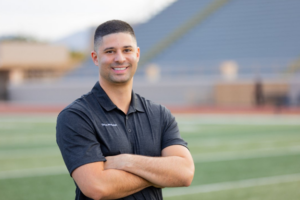Clinical Pearls: Ultrasound-guided procedures and PRP
By Ashkan Alkhamisi, MD, sports medicine physician

Note:
Within the sports medicine specialty, one of the current trending topics is the use of ultrasound-guided procedures and providing OrthoBiologics such as platelet rich plasma (PRP) for non-surgical management of orthopedic issues.
In sports medicine, ultrasound is useful for diagnostic purposes as it facilitates evaluation of various musculoskeletal structures. For example, a doctor may use ultrasound to look at the rotator cuff tendons and calf muscle to assess for tears during sports injuries. Ultrasound can also be used to look for fluid around or within a structure as an indication of inflammation (muscle), tendonitis (tendons) or bursitis (bursa) throughout the body. A sports medicine physician may also be able to look at a structure as it progresses through the range of motion of that body part to look for any abnormalities.
In addition to its diagnostic uses, I frequently use ultrasound in my clinic to perform therapeutic procedures to allow for direct visualization of the target structure being injected. When used in this way, the needle can be visualized as it is directed into the target during the procedure while decreasing the chances of causing pain when avoiding other structures. Ultrasound has the advantages of being relatively inexpensive, very accessible in the hospital or outpatient clinic setting and highly accurate for the experienced physician.
Although steroid injections have been commonplace in orthopedics for many years, many sports medicine physicians understand the limitations of steroids and have been providing other injection therapies to help improve patient outcomes. PRP injections is an injection of your own blood that has been spun down to increase the concentration of platelets. This injection contains proteins, cytokines and other bioactive molecules that initiate and regulate the basic aspects of wound healing via cell signaling. The goal is to change the inflammatory process of the joint or diseased tendon in order to promote proper and long-term healing.
There have been an increasing number of high-quality clinical research studies suggesting that this can be a safe and potentially efficacious treatment, and it is widely being adopted as a suitable non-surgical treatment option in the world of musculoskeletal conditions. Fortunately, there are only few risks to doing PRP injections such as bleeding, pain and infection which are no different than performing any other type of injection. PRP is not expected to create allergic responses or increased risks of cross reactivity, as long as the autologous PRP is harvested from the patient’s own body and used only for that person.
With the continued interest from the general public regarding PRP therapy, physicians can make an informed and educated decision about whether PRP therapy is appropriate for their respective patients based off multiple factors, as they incorporate this promising treatment strategy into their clinical practice.
Learn more about PRP therapy here.
HonorHealth does not endorse, advocate or verify the views or information presented in this article. Any views expressed in this article are solely the views of the author, and information as provided on a “as is” basis with no representation or warranty that it is accurate or up to date. This publication is intended for medical professionals only. Readers retain full responsibility for the care and treatment of patients and should use professional judgment when considering the information presented.
